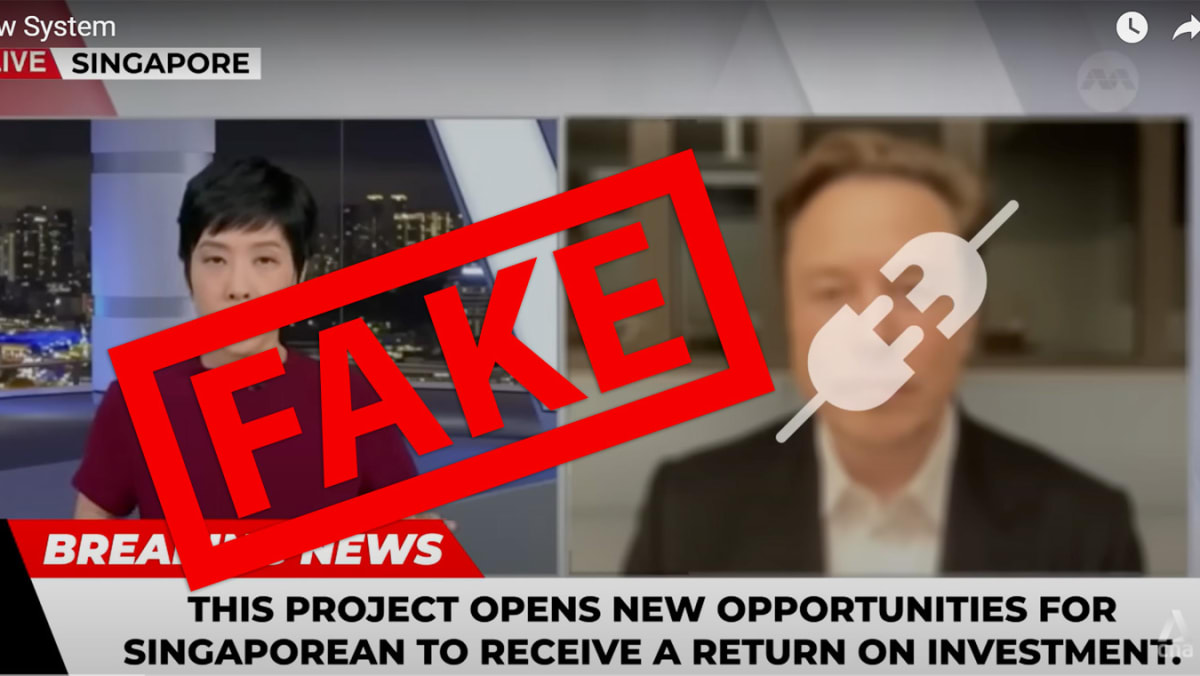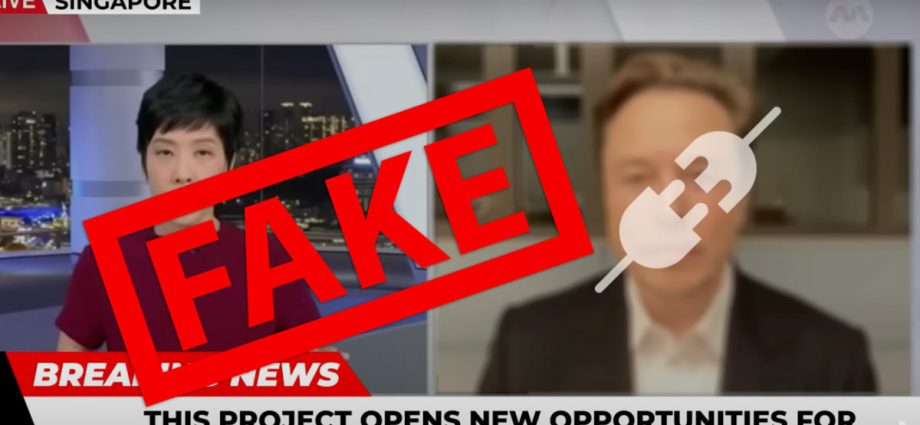
SINGAPORE: Seen an online video of a newscaster or a news interviewee touting a financial or investment opportunity that seemed somewhat odd and unnatural? You’re not alone.
More deepfakes, or artificial intelligence-manipulated media, are circulating online, and scammers have been quick to exploit new, more accessible tools to produce AI-generated content.
CNA has seen an uptick of reports of scam videos misusing its footage to advertise dodgy investment opportunities in recent months, with at least eight such videos flagged to us in the past month.
It comes as scammers are also using fake ads featuring unauthorsed use of Prime Minister Lee Hsien Loong’s image to drive attention to websites masquerading as CNA articles.
In one recent example, scammers faked a video of CNA newscaster Loke Wei Sue “interviewing” Tesla Motors CEO and Twitter owner Elon Musk. The video uses CNA and Mediacorp branding without authorisation and Ms Loke and Mr Musk have their voices dubbed over.
The deepfake video has also been run as a pre-roll advertisement on other YouTube videos.
One version of the video titled “SG New System” was uploaded by a user named “Migliorare” on Jul 12, 2023. It has since garnered more than 60,000 views despite it being an unlisted video. It is not visible on the user’s profile page neither can it be found using YouTube’s search function, suggesting that the uploader is using the deepfake video to target audiences in a clandestine fashion.
When asked on Tuesday (Jul 25) about the inauthentic video of the Musk “interview”, a YouTube spokesperson said the platform has well-established community guidelines that outline the types of content that are not allowed, including clear policies on misinformation and spam, deceptive practices, and scams.
“We are currently looking into the issue and will act on content that violates these policies,” the spokesperson added.
HOW TO TELL IF A VIDEO IS A DEEPFAKE?
Quality of deepfaked videos tends to be blurry to mask manipulation. Voices on such videos are also often inconsistent with mouth movements.
Experts CNA spoke with said there are other telltale signs of a deepfake or manipulated video that viewers should look out for.
National University of Singapore (NUS) Associate Professor Terence Sim, whose research interest and expertise include on deepfake synthesis and detection, said these signs generally fall into three categories:
- Physical artefacts
- Semantic features
- Content
Assoc Prof Sim said physical artefacts could include visual imperfections. In the case of the abovementioned fake interview clip, one such example is Ms Loke’s noticeable voice change when it “changed significantly … It became more British,” he said.
As for semantic features, he cited the example of Musk looking away from the camera when purportedly stating facts rather than when thinking about an answer. “This is unnatural,” he said.
Another giveaway lies in the content of Musk’s statement. At one point in the video, Musk said “working for this company”. Assoc Prof Sim noted “you don’t say this if you’re the owner” of the business.
So what should you do when you encounter a deepfake or suspicious video? You should report it to the platform. You can click the following links to report inauthentic content on YouTube and Facebook.
YouTube has said it relies on a combination of people and technology to enforce its community guidelines. “The YouTube community plays an important role in flagging content they think is inappropriate,” it said.
Doing so would allow reviewers to evaluate flagged videos, and those that a trained reviewer deems a policy violation would be removed.

